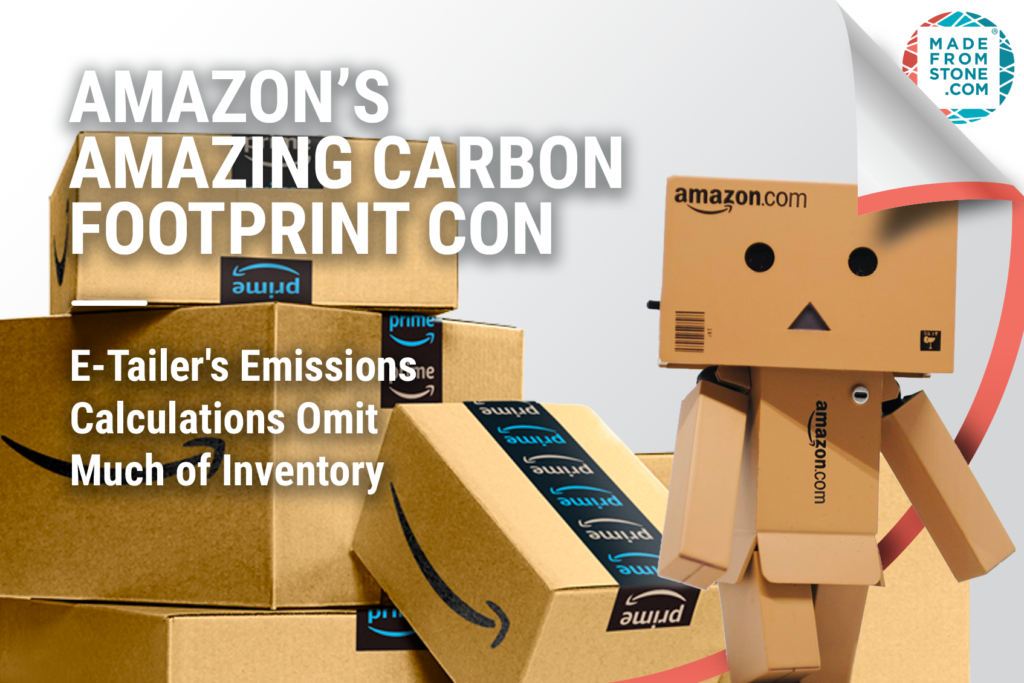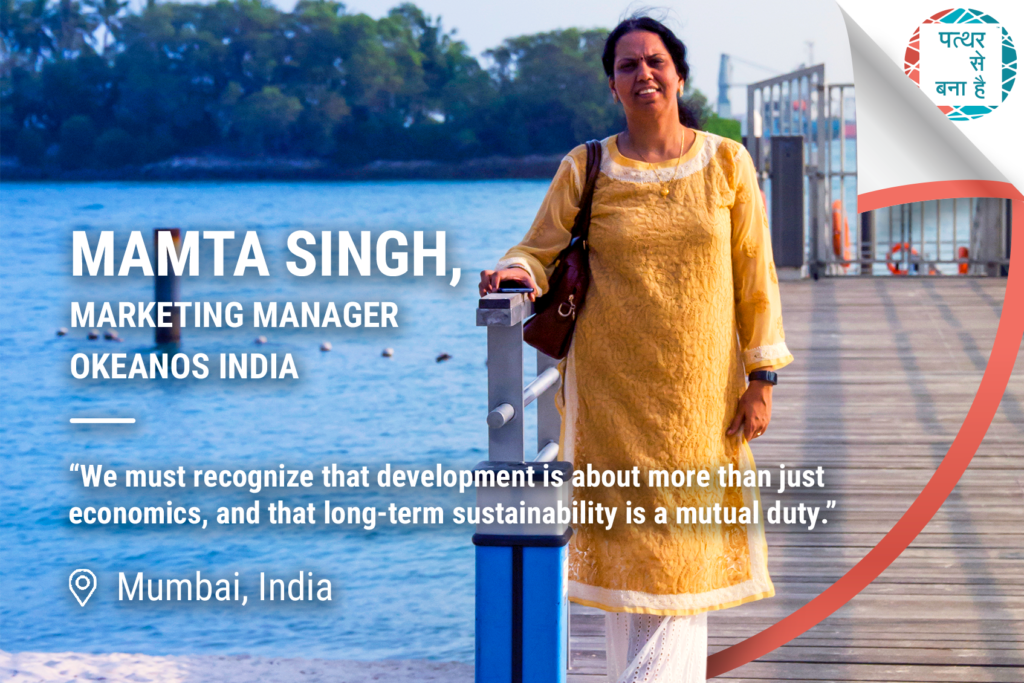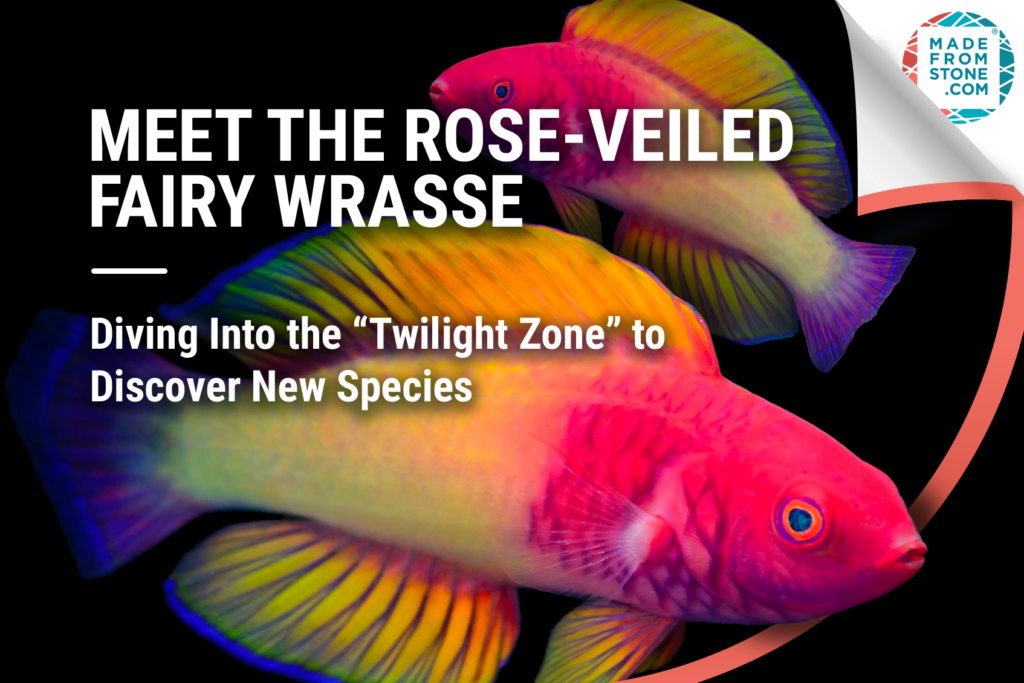Okeanos was named one of Fast Company’s 2022 World Changing Ideas!
+
|
|
|||
|

We’re making moves in Medellin, Colombia and beyond! In partnership with Coagranorte, we’re thrilled to announce that packaging for their signature rice brand, Arroz Zulia, is now Made From Stone, immediately reducing both the carbon footprint and overall plastic content of the packaging by more than half! Colombia readers, visit your local Tiendas Olimpica to pick up a bag!
Do you want to transform your products into sustainability superstars?
Contact trade@madefromstone.com today!

This year, Rockefeller Center has collaborated with the United Nations Environment Programme and the Climate Museum for the 2022 edition of The Flag Project.
Themed “Only One Earth,” designers from all over the world submitted flag designs that highlight what the environment means to us, how we live sustainably and in harmony with nature, and the daily steps we take towards positive climate action. Of hundreds of submissions, 83 flag designs (including ours!) were selected to fly above the famed Rockefeller Plaza in New York City for the month of April. Our flag design features Mother Earth embracing our Made From Stone globe, highlighting the idea that though we may be divided by bodies of water, together we are one.
Make sure to keep an eye on our Instagram account
@wearemadefromstone to see our flag flying high!

A new report is shining a light on how Amazon is being calculated about calculating their carbon footprint. It turns out that the retail giant strategically omits key data from their calculation, taking into consideration the full life cycle of a product when calculating its carbon footprint only when that product bears an Amazon label – which is makes up only 1% of all of Amazon’s e-commerce sales, like the company’s popular Amazon Echo and Kindle products.
However, Amazon doesn’t factor in the emissions from products bought from a manufacturer and sold directly to a consumer by Amazon, like a name-brand refrigerator or popular children’s toy.
Amazon, which self-reports it’s carbon emissions to a non-profit called the Carbon Disclosure Project, asked that it’s report not be shared publicly. Under the Greenhouse Gas reporting protocol, retailers should be counting all products sold directly to consumers. The report also detailed other discrepancies between the things that Amazon counts toward its carbon footprint calculation, and those of competitors like Target and Walmart. For example, these other big-box stores factor in emissions from the commutes of their employees to their company’s carbon footprint. Amazon, however, only factors in emissions related to its company shuttles.
While there is no specific set of guidelines that Amazon has to adhere to, the report, which was obtained by media outlet The Reveal, is a perfect example of how self-disclosure doesn’t translate to actionable change. If Amazon doesn’t factor in all of the information when calculating their emissions targets, they can achieve their goals more quickly, making it seem like they’ve done more good than they have.
To learn about Okeanos’ commitment to transparency
in our reporting, visit our ESG page here.

Meet Mamta Singh, our magical Marketing Manager for Okeanos India. Read on to see what motivates Mamta to live sustainably, and how her Indian culture has imbued these values in her.
Tell us about your childhood. Did you spend time by the ocean?
Like most, I cherish my childhood days. Being brought up in Mumbai suburbs – going to the seashore used to be the highlight of our family outings.
How have you noticed the conversation around sustainability change in the past several years in India?
Sustainable and ecologically friendly techniques and mind-sets are a day-to-day part of the Indian heritage and lifestyle. India has a hoarding culture (in case something comes in handy) as well as a thrifty culture (re-use). In coping with environmental issues and learning to live together in sustainable communities, India and the rest of the globe have a long and challenging path ahead of them.
How has working for an environmentally focused company impacted the choices you make in your daily life?
I always had a sustainable lifestyle. Working with Okeanos has given me an opportunity to be part of a sustainability movement on a global stage. We must recognize that development is about more than just economics, and that long-term sustainability is a mutual duty.
If you could pick a body of water anywhere in the world to spend time near, where would it be?
Dal lake , Srinagar, India – A pristine lake surrounded by snow clad mountains. Living in houseboat- moving around in Shikara is a surreal experience.
What new skill or hobby did you pick up during quarantine?
I tried practicing Spanish. Since most of service providers were closed during lockdown , I learned to do a lot of DIY.
Now that the world is beginning to re-open, what is the thing you’re most looking forward to?
A sense of normalcy.
Want to be part of the Okeanos team?
Check out our Careers page!

In this section of Set In Stone, we like to highlight the surprising, unique, and unusual phenomena and creatures that make our Okeanos worth preserving. Meet the Rose-veiled Fairy Wrasse!
This month, scientists in the Maldives discovered this bright, beautiful creature during a dive into what’s referred to as the “twilight zone reefs.” Relatively undiscovered, these reefs can be found up to 150 meters beneath the surface, well beyond recreational diving limits. Using special diving gear along with rebreathers and helium, the divers discovered what has come to be known as the Cirrhilabrus Finifenmaa – or the Rose-Veiled Fairy Wrasse.
This colorful creature takes its name from the national flower of the Maldives Finifenmaa, which means rose in the local language. Upon further study, scientists discovered that adult males have unique color patterns including bright magenta, peach, dark purple, and orange-pink.
Want to see more stunning sea creatures?
Click here to head over to our Instagram.
News You Should Know:
| Cookie | Duration | Description |
|---|---|---|
| cookielawinfo-checkbox-analytics | 11 months | This cookie is set by GDPR Cookie Consent plugin. The cookie is used to store the user consent for the cookies in the category "Analytics". |
| cookielawinfo-checkbox-functional | 11 months | The cookie is set by GDPR cookie consent to record the user consent for the cookies in the category "Functional". |
| cookielawinfo-checkbox-necessary | 11 months | This cookie is set by GDPR Cookie Consent plugin. The cookies is used to store the user consent for the cookies in the category "Necessary". |
| cookielawinfo-checkbox-others | 11 months | This cookie is set by GDPR Cookie Consent plugin. The cookie is used to store the user consent for the cookies in the category "Other. |
| cookielawinfo-checkbox-performance | 11 months | This cookie is set by GDPR Cookie Consent plugin. The cookie is used to store the user consent for the cookies in the category "Performance". |
| viewed_cookie_policy | 11 months | The cookie is set by the GDPR Cookie Consent plugin and is used to store whether or not user has consented to the use of cookies. It does not store any personal data. |
